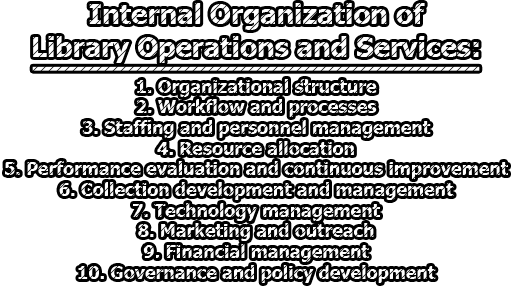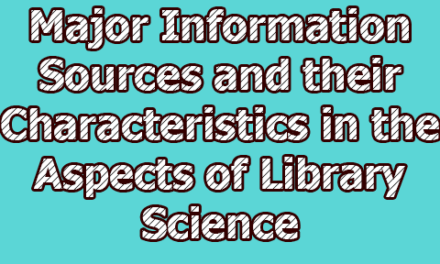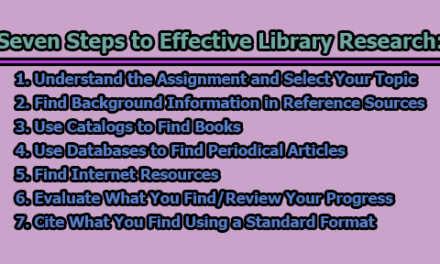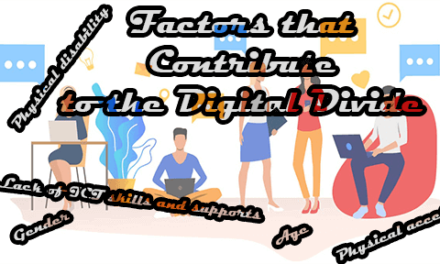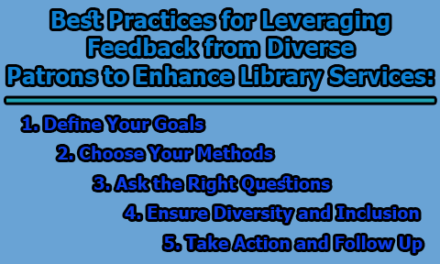Internal Organization of Library Operations and Services:
The internal organization of library operations and services refers to the way in which library resources, personnel, and activities are organized and coordinated to achieve the library’s mission and goals. This involves several key elements, including:
1. Organizational structure: The library’s organizational structure refers to the way in which library departments, units, and personnel are organized and structured to support library operations and services. This includes the reporting relationships between different departments and units, as well as the distribution of roles and responsibilities among library personnel.
2. Workflow and processes: The library’s workflow and processes refer to the steps and procedures used to complete different library activities and services. This includes the procedures for cataloging and processing materials, managing circulation, providing reference services, and managing library collections.
3. Staffing and personnel management: Staffing and personnel management refer to the processes used to recruit, hire, train, and manage library personnel. This includes determining staffing needs, recruiting and hiring personnel with the appropriate skills and qualifications, providing ongoing training and professional development opportunities, and managing staff performance.
4. Resource allocation: Resource allocation refers to the way in which library resources, including personnel, budget, and technology, are allocated to support library operations and services. This includes determining the appropriate level of resources needed to support library operations and services, allocating resources in a way that maximizes efficiency and effectiveness, and monitoring resource utilization to ensure that resources are being used effectively.
5. Performance evaluation and continuous improvement: Performance evaluation and continuous improvement refer to the processes used to evaluate library operations and services and identify areas for improvement. This includes regularly reviewing library operations and services to identify strengths and weaknesses, using performance metrics to evaluate library performance, and implementing changes to improve efficiency and effectiveness.
6. Collection development and management: Collection development and management refers to the processes used to build, maintain, and manage library collections. This includes developing collection policies, selecting and acquiring materials, cataloging and processing materials, and managing the physical space needed to house library collections.
7. Technology management: Technology management refers to the processes used to manage library technology, including hardware, software, and digital resources. This includes managing library automation systems, digital repositories, and online resources, as well as ensuring that library technology is up-to-date and functioning properly.
8. Marketing and outreach: Marketing and outreach refers to the processes used to promote library services and resources to the community. This includes developing marketing materials, organizing outreach events, and collaborating with community organizations and stakeholders to promote library services.
9. Financial management: Financial management refers to the processes used to manage library finances, including budget development, accounting, and financial reporting. This includes ensuring that library finances are managed in a responsible and transparent manner and that library resources are used in a way that maximizes their impact.
10. Governance and policy development: Governance and policy development refer to the processes used to establish library policies and procedures, and to ensure that library operations and services are aligned with the library’s mission and values. This includes developing library policies related to access, privacy, and intellectual freedom, as well as ensuring that library operations and services are consistent with legal and ethical standards.
By carefully managing all of these elements, library managers can ensure that library operations and services are efficient, effective, and responsive to the needs of the community. This, in turn, helps to ensure that libraries remain valuable resources for their communities, both now and in the future.
References:
- Rubin, R. E. (2014). Foundations of library and information science. Neal-Schuman Publishers.
- Evans, G. E., & Alire, C. A. (2013). Management basics for information professionals. American Library Association.
- Hardesty, L. (2016). The organization of information (4th ed.). Libraries Unlimited.
- Chowdhury, G. G., & Chowdhury, S. (2010). Organizing knowledge: An introduction to managing access to information. Facet Publishing.
- Lancaster, F. W. (2015). Information retrieval systems: Management of information organizations. Academic Press.
- Zabel, D. (2017). Essentials of library management. American Library Association.
- Dallis-Comentale, N. (2017). Library administration: Theory and practice. Rowman & Littlefield.
- Bates, M. J. (2017). Information behavior. Emerald Group Publishing Limited.
- Liu, Y. (2014). Digital library development. De Gruyter Saur.
- Matthews, J. R. (2017). Strategic planning and management for library managers. Libraries Unlimited.

Library Lecturer at Nurul Amin Degree College

